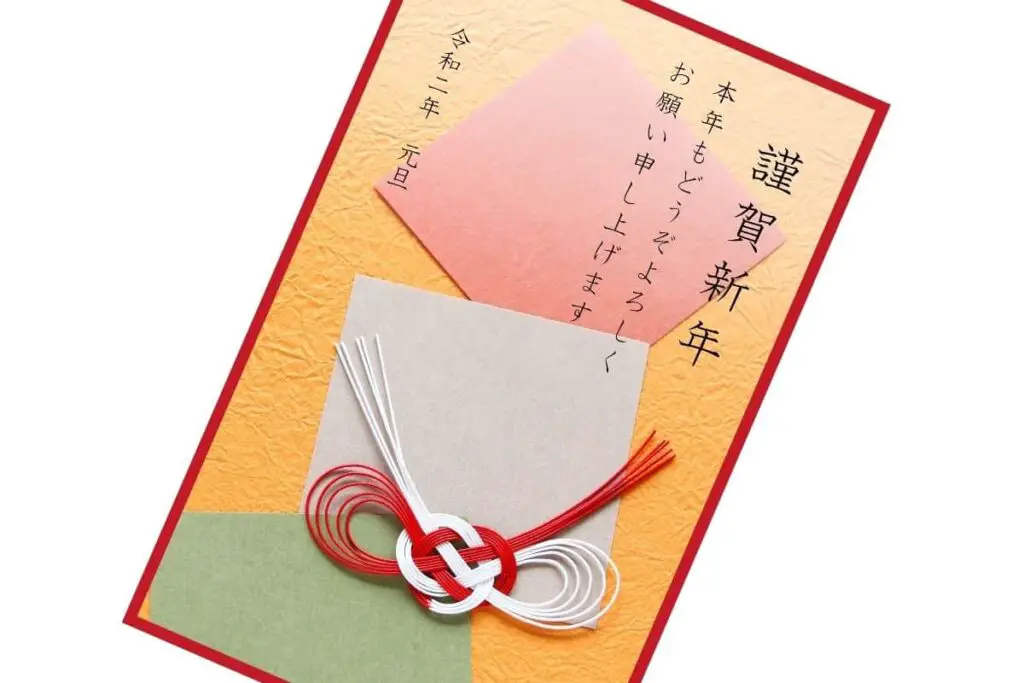In Japan, the holiday season is a time of joy, togetherness, and celebration. Both Christmas and New Year’s are celebrated with great enthusiasm, and one of the highlights of these festivities is the delectable array of foods enjoyed during this time.
From beautifully decorated Christmas cakes to traditional New Year’s dishes with symbolic meanings, Japanese cuisine takes center stage, bringing families and friends together for a memorable and delicious feast.
Let’s embark on a culinary journey through Japan’s festive holiday season and explore the ten delightful foods eaten during Christmas and New Year’s in this captivating nation.
- Christmas Cake (Kurisumasu Keiki):
The Christmas cake is an iconic treat that holds a special place in Japanese holiday traditions. This fluffy and visually appealing dessert is typically a sponge cake adorned with luscious whipped cream and topped with fresh, plump strawberries.
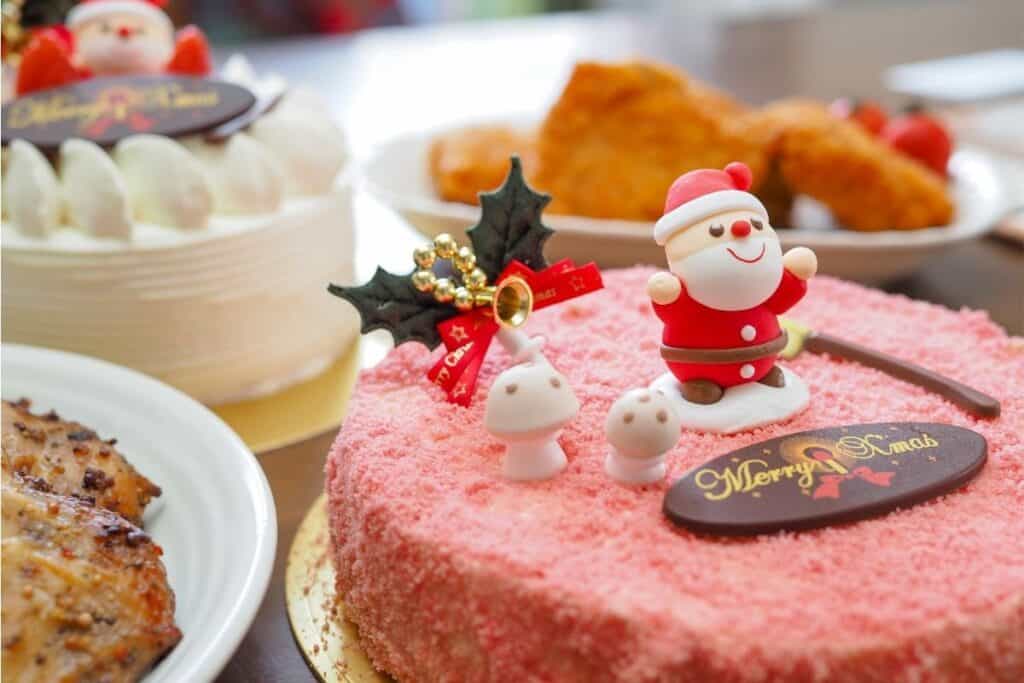
The vibrant red strawberries symbolize the festive colors of Christmas and create a delightful contrast against the snowy white cream. Families often gather around the table to share a slice of this delectable treat after enjoying a scrumptious Christmas dinner.
Bakeries across the country compete to create the most visually appealing and mouthwatering cakes, making it a delightful spectacle for anyone with a sweet tooth.
- Fried Chicken (KFC Christmas Chicken):
Believe it or not, fried chicken has become an integral part of Christmas celebrations in Japan, and it all began with an unforgettable marketing campaign. In the early 1970s, KFC launched its “Kentucky for Christmas” campaign, introducing a Christmas Party Barrel that included fried chicken, salad, and a Christmas cake.
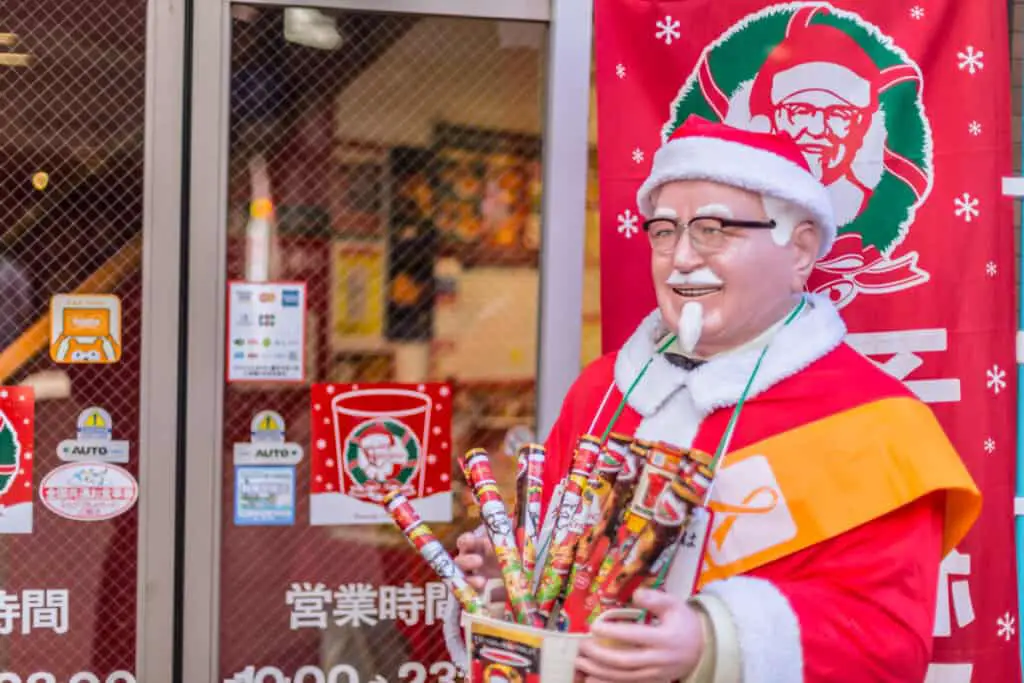
The campaign’s success was beyond imagination, and today, it’s a common sight to see long queues outside KFC outlets during the Christmas season. Many Japanese families pre-order their KFC Christmas buckets weeks in advance to avoid missing out on this mouthwatering holiday meal.
The popularity of this tradition has even inspired other fast-food chains and local restaurants to offer their own twist on fried chicken dishes during the festive season.
- Osechi Ryori:
Osechi Ryori is a traditional Japanese New Year’s feast that is rich in symbolism and meaning. This elaborate assortment of dishes is carefully prepared and beautifully arranged in special bento boxes called jubako.
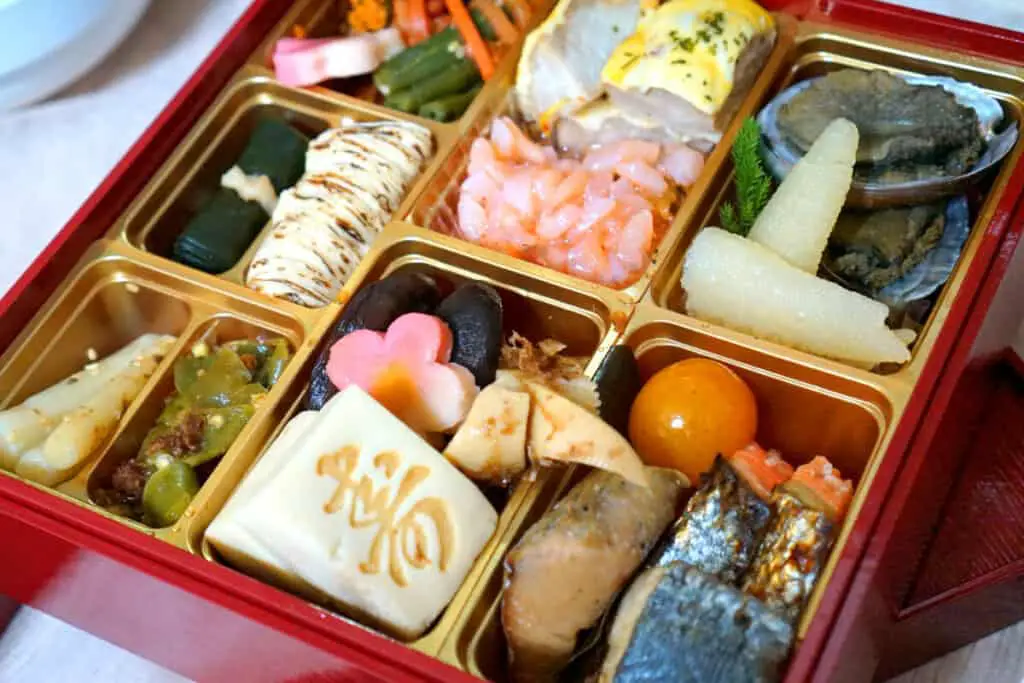
Each dish carries auspicious connotations, and families believe that consuming Osechi Ryori during the first few days of the new year brings good luck and prosperity.
The selection includes dishes like kuromame (simmered black soybeans for health), kazunoko (herring roe for fertility), and kamaboko (fish cake for longevity).
The preparation of Osechi Ryori is a labor of love, and each dish requires skill and attention to detail.
- Toshikoshi Soba:
Toshikoshi Soba, or “year-crossing soba,” is a beloved Japanese tradition on New Year’s Eve. Eating soba noodles on this occasion is believed to bring longevity and good luck for the year ahead.
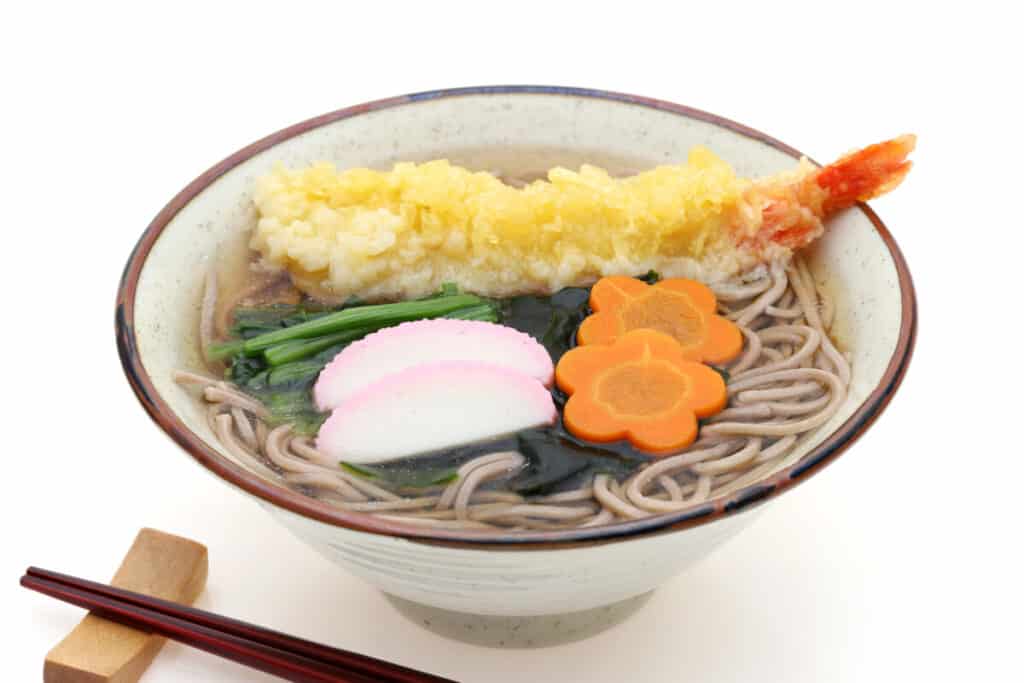
The custom of Toshikoshi Soba has its origins in the Edo period and has been passed down through generations. Families gather around the table to slurp up these long, buckwheat noodles, symbolizing a smooth transition from one year to the next.
While preparing and eating the soba, it’s customary to express gratitude for the past year and make wishes for the future.
- Oden:
Oden is a hearty and warming hot pot dish that is popular during the winter months and especially enjoyed during New Year’s celebrations.
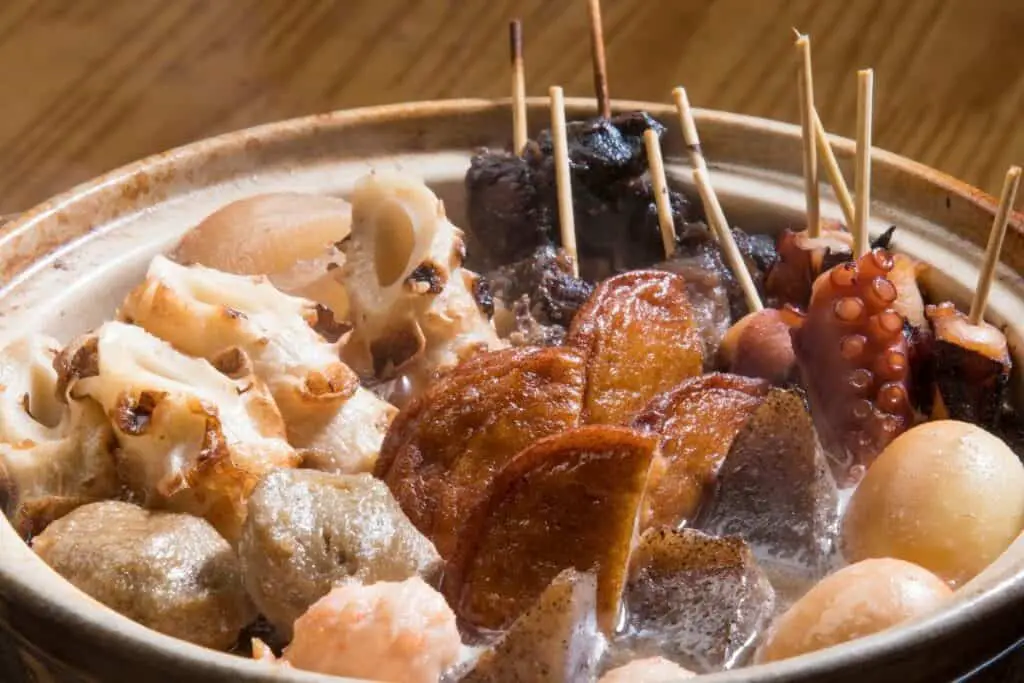
This comforting stew features an assortment of ingredients such as daikon radish, boiled eggs, fish cakes, konnyaku (yam cake), and tofu, all simmered in a flavorful dashi broth.
Oden is a favorite street food during the holiday season, and it is often sold at food stalls and convenience stores, adding to the festive atmosphere.
- Tai (Sea Bream) and Sashimi:
In Japan, fish plays a significant role in New Year’s celebrations, and tai, or sea bream, holds particular importance.
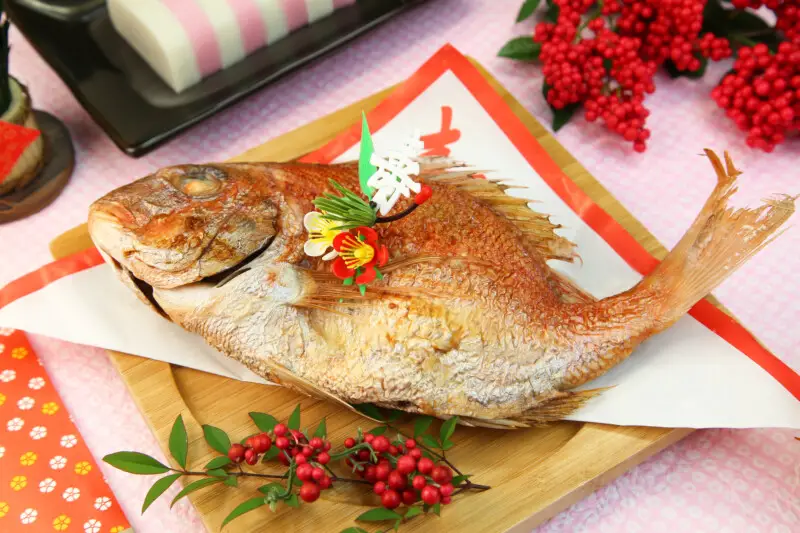
The red color of tai is considered auspicious and represents good fortune. It is often served as sashimi, a delicacy that involves thinly sliced raw fish, and enjoyed on New Year’s Day to mark the arrival of the new year.
The act of slicing the fish is done with precision, as the presentation of sashimi is considered an art form.
- Kuri Kinton:
Kuri Kinton is a traditional Japanese dish made from sweet chestnuts and sweet potatoes. This sweet golden treat is a staple during the New Year’s celebrations and is renowned for its vibrant color and delightful taste.
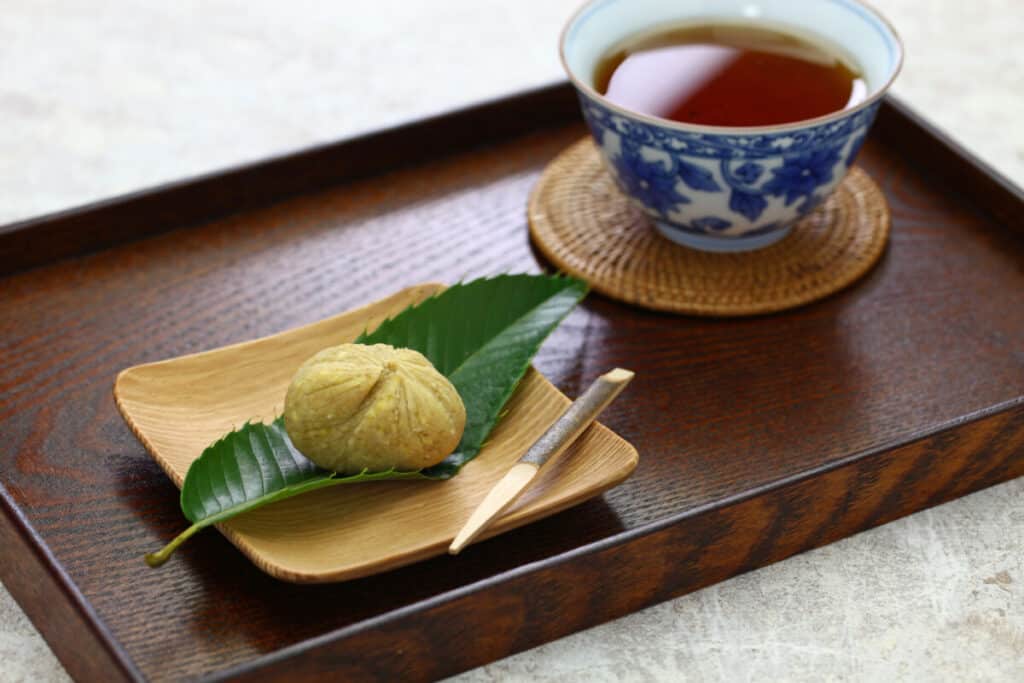
The name “Kuri Kinton” translates to “golden chestnut mash,” and the dish symbolizes wealth and prosperity. Preparing Kuri Kinton involves carefully cooking and mashing chestnuts and sweet potatoes with sugar and other ingredients, resulting in a delightful side dish that perfectly complements the holiday feast.
- Kagami Mochi:
Kagami Mochi is a traditional New Year’s decoration made of stacked rice cakes. The two-tiered mochi stack represents the mirror (kagami) and is a sacred symbol of purification and renewal.
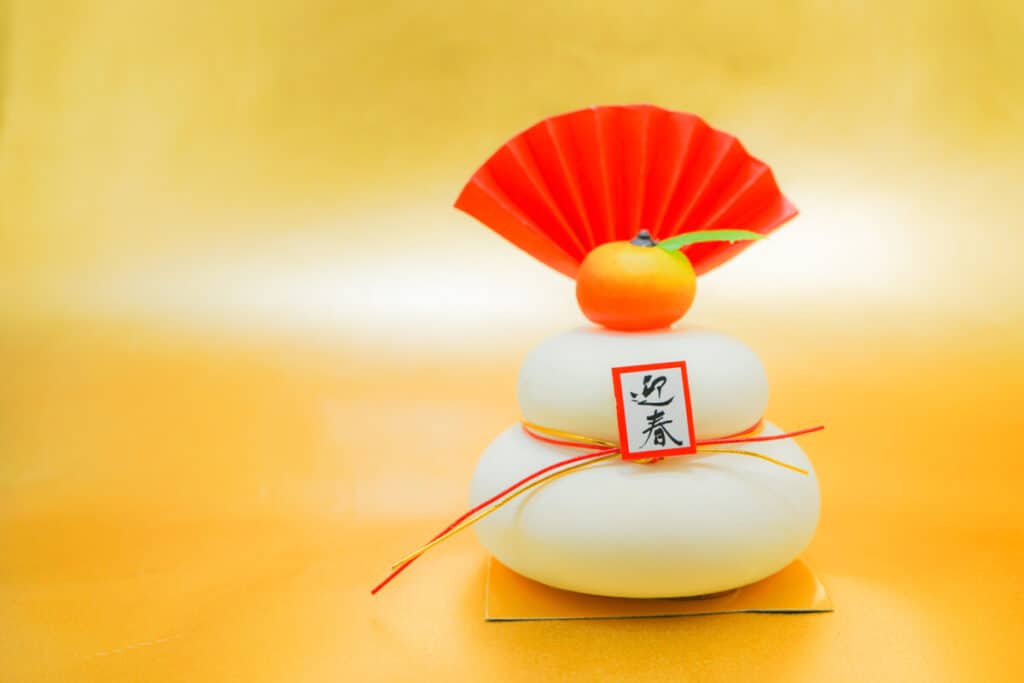
Kagami Mochi is typically displayed in the tokonoma (alcove) of Japanese homes during the New Year’s celebrations, and it is believed to invite good fortune and blessings for the coming year. The mochi is not meant to be eaten directly; instead, it is customarily broken into smaller pieces and consumed as part of various dishes throughout the holiday season.
- Sekihan:
Sekihan, also known as “red rice,” is a special dish often enjoyed during celebratory occasions, including the New Year’s festivities.
The vibrant red color of Sekihan symbolizes happiness, and the dish is prepared by combining glutinous rice with red adzuki beans.
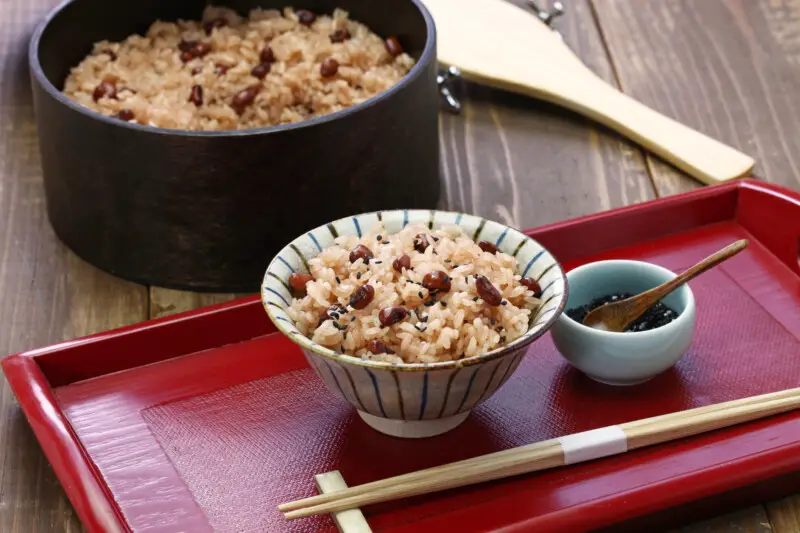
The rice and beans are cooked together, infusing the rice with a delightful sweetness and a unique texture. Sekihan is often served in a festive setting, where family members come together to share the joy of the holiday season.
- Amazake:
Amazake is a traditional sweet rice drink that is enjoyed during the New Year’s celebrations. The name “Amazake” translates to “sweet sake,” but it is a non-alcoholic beverage.
This nutritious drink is made from fermented rice, and it is rich in vitamins and enzymes. Amazake is believed to promote good health and vitality, making it an ideal choice for the holiday season. It can be served hot or cold, and its sweet and creamy taste makes it a favorite among people of all ages.
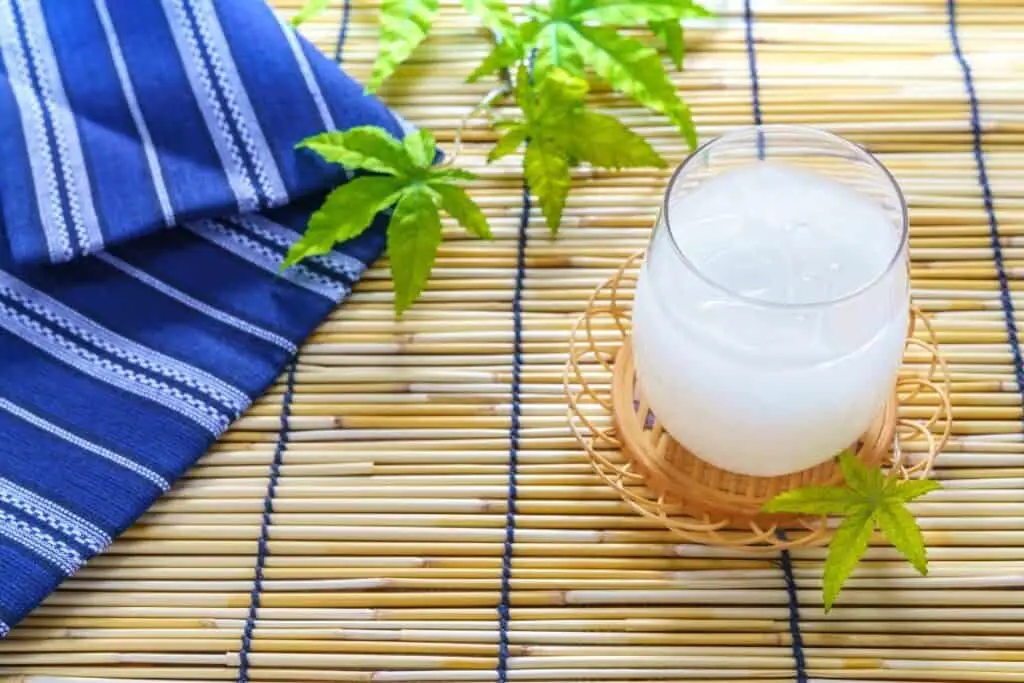
The holiday season in Japan is a time of merriment and culinary delights. From the iconic Christmas cakes to the rich symbolism of Osechi Ryori and the comforting flavors of Toshikoshi Soba, each dish carries its unique significance, connecting families and friends in celebration.
As we savor the delectable foods of the season, we are reminded of the rich cultural heritage and traditions that make Japan’s Christmas and New Year’s festivities truly special.
So, let us raise a toast to the joyous celebrations and wish for a year filled with health, happiness, and delicious moments shared with loved ones.
